Methods of Pipeline repair
and other Equipment
Foreword
All of the repair methods listed below are performed by welding (hot work). This usually requires that the equipment in question be taken out of service and delivered completely depressurized and clean.
The problem, however, is that a single pipeline, vessel or heat exchanger in a system usually cannot be taken out of service and an entire unit must be shut down. Therefore, the repair methods below are usually used when the unit or entire plant is out of service.
Welding repairs on Pipelines
Removal and replacement of defective pipe is always considered a good alternative to repair. Most industry standards suggest making repairs to pipelines by replacing sections of pipe whenever possible.
Often an entire section of pipe is replaced - weld to weld - rather than cutting out and replacing a smaller section. This requires more work, but it minimizes the number of round or circumferential welds in the pipeline.
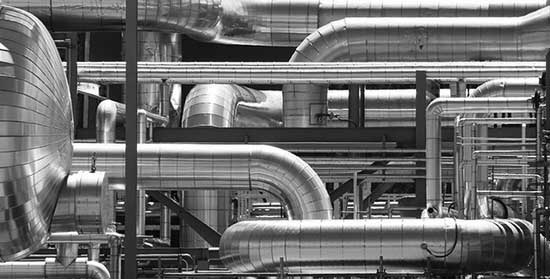
Fillet Welded Patch
Fillet Welded Patch can be used to temporarily repair e.g. pressure vessels as the Patch Plate covers the damaged areas and is welded to the vessel by Fillet Welds. This method is applicable to damage caused by Corrosion or Erosion causing the walls of the vessel to thin (Local Wall Thinning).
According to API 510, the Fillet Welded Patch used must have rounded corners at least equal to the curvature of the radius of 1 in (25mm), so as not to cause stress concentration.
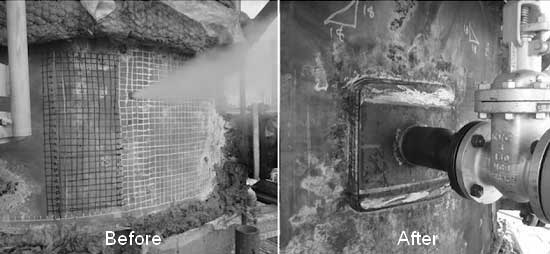 Fillet Welded Patch on pressure vessel
Fillet Welded Patch on pressure vessel
Welded Half Repair Sleeves
Welded Half Repair Sleeves can be a repair technique in which metal sheets are welded to cover defects, and are pressure resistant when the sleeve is installed over a known leak.
For a pressure-resistant application, the wall thickness of the sleeve and all welds must withstand the full operating pressure of the pipeline. The longitudinal weld joint formed by the two halves of the sleeve should be a full-thickness butt weld. The circumferential weld formed by the sleeves welded to the pipeline shall be a full filled weld.
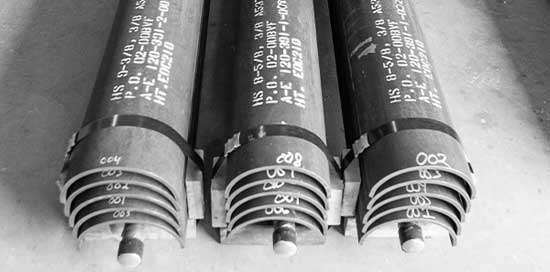 Steel repair sleeves
Steel repair sleeves
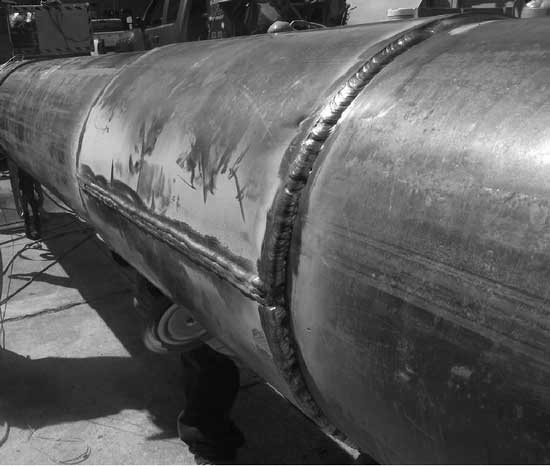 Welded half repair sleeves
Welded half repair sleeves
It is therefore common, before replacing a pipeline or welding reapair sleeves, to look for alternatives. Over the years, several repair systems have come on the market to temporarily repair a pipeline. Some of these systems have now proven their reliability and are used by many multinational companies.
Weld Overlay / Weld Deposition Repair
Weld overlay is a pipeline repair technique where a suitable metal is deposited through welding to the pipe surface, valve body/trim, or a pipe fitting in the form of a layer. This may be used to improve pipe strength or surface protection while keeping the base structure’s strength, e.g., as a guard against corrosion.
Weld overlay provides layering of an alloy metal different in material from that of base pipelines and associated piping/fittings. Weld overlay is carried out by shielded metal arc welding, Metal Inert Gas (MIG) welding/Tungsten Inert Gas (TIG) welding, Submerged arc welding, CO2 welding or Plasma Transferred Arc (PTA) welding.
Weld deposition is best suited for difficult or complicated pipe configurations or contouring pipelines. Weld deposition, in some instances, provide better corrosion and wear resistance than sleeves with regards to galvanic corrosion. Weld deposition is also a proper repair technique to inhibit crevice corrosion and fretting corrosion. While attempting weld overlay, metallurgical considerations are essential due to excessive heat generation.
To avoid metallurgical defects during weld overlay selection of compatible electrode and suitable welding procedure is critical. Often temper bead weld technique is used to minimize hardening of heat affected zone through alternate layers of deposited metal through low and high heat input. Alternating high and low heat input welding helps in controlling excessive hardening of the heat-affected zone (similar to the annealing process).
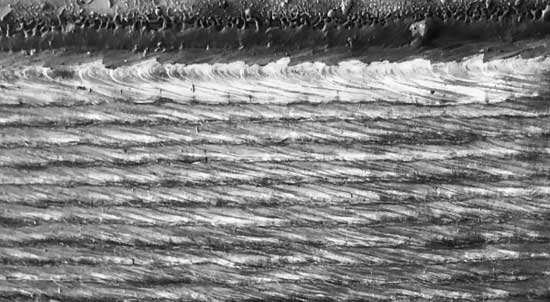 Weld Deposition Repair
Weld Deposition Repair